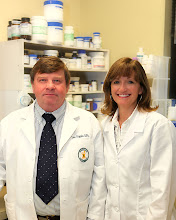The skin is the largest organ of the body and it is constantly changing throughout your life. It provides a physical barrier protecting the body from the environment. It is seen by everyone we meet and physical beauty is many times based on the appearance of your skin. We examine our skin each morning in the mirror afraid that we will find the inevitable fine line, wrinkle, discoloration, etc. all pointing to signs of aging. Fortunately, we now have at our disposal products that contain ingredients that actually are effective in fighting the signs of aging. First a basic understanding of the anatomy of the skin is needed in order for you to choose the products with ingredients that are the most beneficial for aging skin.
The basic structure of the skin contains two layers. The outermost layer is the epidermis serving as a physical and chemical barrier to the interior body and exterior environment. The second layer is the dermis which provides the structural support of the skin. The two layers work together as one unit for each layer affects the other.
The epidermis consists of stacked layers of cells that are constantly changing. The cells are connected by protein bridges called desmosomes. The cells begin in the lowest layer of the epidermis called the basal layer. As the cells mature they move up through the layers of the epidermis changing in chemical and physical composition. When the cells reach their destination, the stratum corneum, they are called corneocytes. They lack a nucleus and hover between life and death causing them to be easily sloughed off with mild force. When they are sloughed off they are replaced by underlying cells that rise up to take its place. This is how exfoliation is beneficial to the skin. It removes corneocytes signally new cells to move up through the layers. The corneocyte contains a protein called keratin that has water retaining properties. The corneocyte is surrounded by a protein envelope and insoluble oily substances called lipids. The configuration of the lipids around the corneocytes creates an impermeable barrier for the passage of water out of the stratum corneum and prevents release of the natural moisturizing factors from the surface of the skin. The natural moisturizing factors are chemicals such as urea, lactic acid, salts, and free amino acids. The formulation of skincare products must take into account this water loving and water resisting property of the skin in order to be absorbed through the skin layers.
The other layer is the dermis which contains among other things blood vessels, lymphatic vessels, and nerves. It is 90% of the skin mass and the greatest part of physical strength. It contains the structural proteins, collagen and elastin. Collagen provides the skin strength and elastin provides the “spring and snap” to the skin. Collagen production starts decreasing after the age of 25 so the importance of using products that stimulate collagen production begins at a very early age. Collagen and elastin are in a fluid matrix called the ground substance. This matrix is made up of water and a class of large molecules known as proteoglycans which serve to maintain water balance in the dermis, add support for other dermal components, and act as a matrix for cell migration, metabolism, and growth. Chemically proteoglycans are made up of a polysaccharide and a protein. The polysaccharide is called glycosaminoglycan of which hyaluronic acid is the most well known. Because lipids decrease sharply after the age of 40, the skin is more susceptible to dry skin.
This is a very basic discussion of the skin and some of its components. The best skincare products are formulated understanding these components of the skin. More skin anatomy will follow when the individual ingredients are discussed.
Friday, July 31, 2009
Subscribe to:
Posts (Atom)

